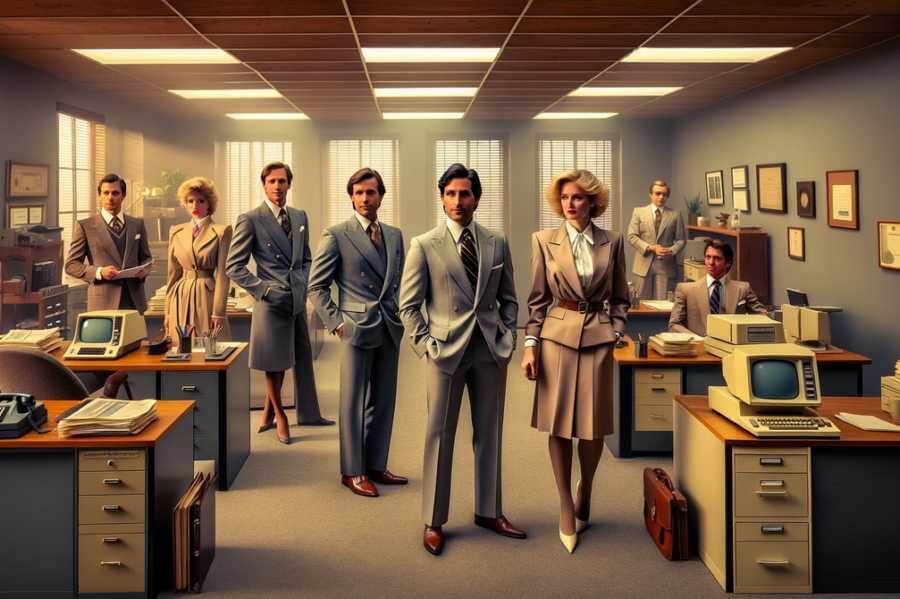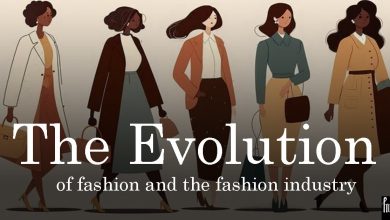The Evolution of Women’s Style: A Timeless Journey Through Fashion

Fashion is more than just clothing; it is a form of self-expression, a reflection of societal changes, and a testament to the evolving roles of women in society. Over the centuries, women’s style has undergone dramatic transformations, influenced by cultural shifts, technological advancements, and the fight for gender equality. From the corsets of the Victorian era to the power suits of the 1980s and the athleisure trend of today, women’s fashion has always been a powerful tool for asserting identity and challenging norms. This article delves into the rich history of women’s style, exploring its evolution, key trends, and the enduring impact of fashion on women’s lives.
1. The Victorian Era: Restriction and Elegance
The Victorian era (1837–1901) was a time of strict social norms and rigid gender roles, and women’s fashion reflected these values. The hourglass silhouette was highly prized, achieved through the use of corsets, crinolines, and bustles. Corsets, often made of whalebone or steel, were tightly laced to cinch the waist and create a dramatic contrast between the bust and hips. While these garments were undeniably elegant, they were also restrictive, symbolizing the limited freedom women had during this period.
Dresses were voluminous, with layers of petticoats and skirts that emphasized modesty and femininity. High necklines, long sleeves, and floor-length hemlines were the norm, reflecting the era’s emphasis on propriety. However, as the Industrial Revolution progressed, mass production made fashionable clothing more accessible to the middle class, allowing more women to participate in trends.
Despite its constraints, Victorian fashion also laid the groundwork for future innovations. The introduction of the sewing machine in the mid-19th century revolutionized garment production, paving the way for more intricate designs and faster turnaround times. This era also saw the rise of fashion magazines, which helped disseminate trends and inspire women to experiment with their style.
2. The Roaring Twenties: Liberation and Flapper Fashion
The 1920s marked a seismic shift in women’s style, mirroring the social and cultural changes of the time. The end of World War I brought about a sense of liberation, and women embraced newfound freedoms, including the right to vote in many countries. This era, often referred to as the Roaring Twenties, was characterized by its rebellious spirit and rejection of traditional norms.
The flapper style became synonymous with the decade, embodying the modern, independent woman. Flappers rejected the restrictive corsets and voluminous skirts of the Victorian era in favor of loose, drop-waist dresses that allowed for greater movement. Hemlines rose to the knee, a radical departure from the ankle-length skirts of the past, and women began to embrace shorter hairstyles, such as the iconic bob.
Accessories played a key role in 1920s fashion, with cloche hats, long pearl necklaces, and feathered headbands adding a touch of glamour to outfits. Makeup also became more widely accepted, with women using rouge, lipstick, and kohl eyeliner to create a bold, dramatic look.
The flapper style was more than just a fashion trend; it was a statement of independence and defiance. By challenging traditional notions of femininity, women in the 1920s paved the way for future generations to express themselves freely through fashion.
3. The 1940s: Utility and Resilience
The 1940s were defined by World War II, and women’s fashion reflected the practicality and resourcefulness required during this challenging time. With many men away at war, women took on new roles in the workforce, and their clothing needed to be functional and durable. Utility clothing, characterized by simple designs and minimal embellishments, became the norm.
Dresses and skirts were often made from sturdy fabrics like wool and cotton, with A-line silhouettes that allowed for ease of movement. Shoulder pads were popular, adding structure to jackets and blouses and creating a more masculine, authoritative look. This was a time when women’s fashion began to blur the lines between traditional gender roles, reflecting their expanding responsibilities.
Due to rationing, women had to make do with limited resources, leading to creative solutions like repurposing old garments and using parachute silk to make dresses. The “make do and mend” mentality became a hallmark of 1940s fashion, emphasizing thriftiness and ingenuity.
Despite the challenges, the 1940s also saw the emergence of iconic styles that continue to influence fashion today. The tailored suit, popularized by stars like Katharine Hepburn, became a symbol of strength and sophistication. Meanwhile, the pin-up style, with its fitted dresses and playful prints, offered a touch of glamour and optimism during a difficult time.
4. The 1960s: Revolution and Self-Expression
The 1960s were a decade of radical change, and women’s fashion reflected the era’s spirit of rebellion and experimentation. The youth-driven counterculture movement challenged traditional norms, and women embraced bold, unconventional styles that broke free from the constraints of the past.
One of the most iconic trends of the 1960s was the miniskirt, popularized by British designer Mary Quant. This daring garment, with its hemline several inches above the knee, became a symbol of female empowerment and sexual liberation. Paired with go-go boots and mod-inspired patterns, the miniskirt captured the youthful energy of the decade.
The 1960s also saw the rise of psychedelic fashion, characterized by vibrant colors, bold prints, and unconventional silhouettes. Designers like Emilio Pucci and Yves Saint Laurent embraced this aesthetic, creating clothing that reflected the era’s fascination with music, art, and experimentation.
At the same time, the feminist movement gained momentum, and women began to reject restrictive clothing in favor of more comfortable, practical options. Pantsuits, once considered inappropriate for women, became increasingly popular, symbolizing the fight for gender equality.
The 1960s were a time of immense creativity and self-expression, and women’s fashion played a central role in shaping the cultural landscape of the decade.

5. The 1980s: Power Dressing and Excess
The 1980s were a decade of excess, and women’s fashion reflected the era’s emphasis on wealth, success, and individuality. Power dressing became a defining trend, as women entered the workforce in greater numbers and sought to assert their authority in male-dominated industries.
The power suit, with its sharp shoulders, tailored blazers, and pencil skirts, became a symbol of female empowerment. Designers like Giorgio Armani and Thierry Mugler embraced this aesthetic, creating clothing that exuded confidence and sophistication. Bold colors, oversized silhouettes, and statement accessories were also hallmarks of 1980s fashion, reflecting the era’s “more is more” mentality.
Fitness wear also gained popularity during the 1980s, thanks in part to the aerobics craze. Leggings, leotards, and headbands became wardrobe staples, blending style and functionality. This trend laid the groundwork for the athleisure movement that would dominate fashion in the 21st century.
The 1980s were a time of bold choices and unapologetic self-expression, and women’s fashion reflected the era’s emphasis on individuality and ambition.
6. The 2000s: Eclecticism and Globalization
The turn of the millennium brought about a new era of eclecticism in women’s fashion, as globalization and the rise of the internet made it easier than ever to access trends from around the world. The 2000s were characterized by a mix of styles, from bohemian chic to minimalist elegance, reflecting the diverse influences shaping the fashion industry.
Low-rise jeans, popularized by celebrities like Britney Spears and Paris Hilton, became a defining trend of the early 2000s. Paired with crop tops and chunky sneakers, this look captured the casual, carefree spirit of the decade. At the same time, designers like Alexander McQueen and Marc Jacobs pushed the boundaries of fashion, creating avant-garde pieces that challenged traditional notions of beauty.
The 2000s also saw the rise of fast fashion, with brands like Zara and H&M making trendy clothing accessible to a wider audience. While this democratization of fashion allowed more women to experiment with their style, it also raised concerns about sustainability and ethical production practices.
Despite these challenges, the 2000s were a time of creativity and innovation in women’s fashion, as designers and consumers alike embraced the possibilities of a globalized world.
7. The 2010s and Beyond: Sustainability and Individuality
As we move further into the 21st century, women’s fashion continues to evolve, reflecting the values and concerns of modern society. Sustainability has become a key focus, with consumers and designers alike seeking to reduce the environmental impact of the fashion industry. From eco-friendly fabrics to secondhand shopping, women are embracing more conscious ways of dressing.
At the same time, individuality remains at the heart of women’s style. Social media platforms like Instagram and TikTok have given rise to a new generation of fashion influencers, who use their platforms to showcase unique, personalized looks. This has led to a greater emphasis on self-expression and authenticity, as women reject one-size-fits-all trends in favor of clothing that reflects their personality and values.
The rise of gender-neutral fashion has also challenged traditional notions of femininity, offering women more freedom to explore their style without conforming to societal expectations. Designers like Telfar Clemens and Palomo Spain are leading the charge, creating clothing that transcends gender boundaries and celebrates diversity.
Conclusion: The Enduring Power of Women’s Style
Women’s style has come a long way since the days of corsets and crinolines, evolving to reflect the changing roles and aspirations of women in society. From the flapper dresses of the 1920s to the power suits of the 1980s and the sustainable fashion of today, women’s fashion has always been a powerful tool for self-expression and empowerment.
As we look to the future, it is clear that women’s style will continue to evolve, shaped by technological advancements, cultural shifts, and the ongoing fight for equality. Whether through bold statements or subtle details, fashion remains a way for women to tell their stories, challenge norms, and celebrate their individuality. In a world that is constantly changing, one thing remains constant: the enduring power of women’s style.



